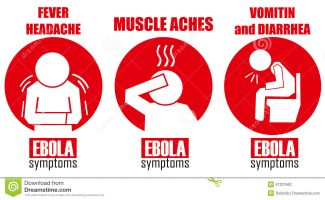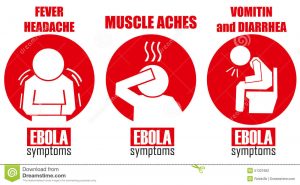The government of the Democratic Republic of the Congo admitted this week that the country’s tenth Ebola outbreak is now officially its worst ever, after the number of confirmed infections crossed the 300 threshold. The virus has killed 211 people, the ministry of health said.
Unlike previous outbreaks, which have been restricted to fairly remote, rural areas, the present epidemic has swept through populated parts of northeastern Congo, a lawless area that is infested with rebel groups, freelance militias and armed criminal gangs.
Centers for Disease Control and Prevention Director Robert Redfield said last week (November 2018) that the Ebola outbreak in conflict-ridden Congo has become so serious that international public health experts need to consider the possibility that it cannot be brought under control and instead will become entrenched.
By extension we believe this means it can spread. There are concerns that Ebola could mutate into an airborne strain, if an outbreak remains active for long enough in human populations. Currently, authorities claim it is passed from person to person and is not airborne although some believe it can be transmitted this way. The implications for airborne Ebola are horrifying.
If the current outbreak cannot be brought under control, it would be the first time since the deadly viral disease was first identified in 1976 that an Ebola outbreak led to the widespread presence of the disease, says Eric Worrell. The current outbreak is entering its fourth month, with nearly 300 cases, including 186 deaths.
If Ebola becomes endemic in North Kivu province, in northeastern Congo, “this will mean that we’ve lost the ability to trace contacts, stop transmission chains and contain the outbreak,” said Tom Inglesby, director of the Johns Hopkins Center for Health Security, which hosted the briefing on Capitol Hill that featured the Ebola discussion with Redfield.
In that scenario, there would be a sustained and unpredictable spread of the deadly virus, with major implications for travel and trade.
War zone
To compound issues, the outbreak is taking place in a part of Congo that is an active war zone. Dozens of armed militias operate in the area, attacking government outposts and civilians, complicating the work of Ebola response teams and putting their security at risk. Violence has escalated in recent weeks, severely hampering the response. The daily rate of new Ebola cases more than doubled in early October. In addition, there is community resistance and deep mistrust of the government.
…
Read more (paywalled): https://www.washingtonpost.com/health/2018/11/05/cdc-director-warns-that-congos-ebola-outbreak-may-not-be-containable/
Could it become a global threat
1. Ebola can spread without visible signs of illness. In some cases Ebola has a long, symptom-free infectious period. People who survive the lethal infection sometimes become symptomless carriers, shedding large numbers of virus particles for months, even years after their own personal encounter with Ebola.
2. Ebola is lethal, estimated at 50% mortality. Even “mild” versions of the disease are often fatal. Importantly, survivors can still carry and shed the virus.
3. Ebola has an extremely rapid mutation rate.
4. Can it be transmitted without a carrier?
From an epidemiological study in 2016;
Aerosol Transmission of Filoviruses
Berhanu Mekibib and Kevin K. Ariën
…
Although there is strong debate on the potential aerogenic transmission of filoviruses, it should be stressed that the transmission by air is not similar to influenza or other airborne infections. The viral particles are limited in the health care units and affected villages or households having direct or indirect contacts with patient(s), if it was really an airborne virus like influenza it would spread rapidly and involve wider geographic area and population. Based on the existing literature, filoviruses have very little to no capacity to be airborne (i.e., inhalation of infectious particles at a distance from the source). The virus does not transmit from an infected person to a susceptible person that is located at a distance [25,70]. First, the virus will not remain viable by the time it gets to the distant point because the aerosol is already desiccated. Secondly, the viral load or aerosol particles in the air gradually decrease with distance from the source to the extent not sufficient to induce infection. However, Chiappelli et al. [33] stated that there is a distinct possibility for EBOV to become airborne because of the customary and high mutation rates of negative sense RNA viruses. According to Brown et al. [99] although it is unclear that these mutations carry any fitness advantage or not, EBOV in western Africa is not behaving differently than what has previously been reported [100]. There is no change in route of transmission, no suggestion of airborne spread, no significant differences in disease presentation. Besides, none of the 23 viruses that cause serious disease in humans have been known to mutate in a way that changed their mode of infection.
At any moment, an unknowing Ebola carrier, the sole survivor of an outbreak which killed their family and friends, a carrier with no visible signs of illness, might decide to build a new life in another country. The potential consequences of such a carrier successfully reaching one of the Western World’s less sanitary cities, triggering a lethal outbreak amongst homeless people and people with compromised immune systems, an outbreak which could pass to the general population of that city, are too horrible to contemplate.


